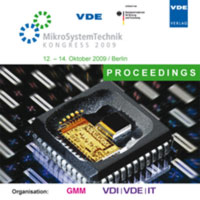Influence of Micro-Burner Geometry on Flame Stability
Conference: MikroSystemTechnik - KONGRESS 2009
10/12/2009 - 10/14/2009 at Berlin, Germany
Proceedings: MikroSystemTechnik
Pages: 4Language: englishTyp: PDF
Personal VDE Members are entitled to a 10% discount on this title
Authors:
Kuipers, Winfred; Bohne, Sven; You, Wenbin; Müller, Jörg (TU Hamburg-Harburg, Hamburg, Deutschland)
Abstract:
With the application of a micro-flame ionization detector (muFID) in mind, this paper is concerned with the influence of several micro-burner design parameters on the stability of miniature flames, which is defined by minimum fuel gas consumption. Decreasing the nozzle size down to at least 2.1·10-9m2 yields higher stability, because in this range minimum fuel gas flow is still limited by flash-back and not yet by quenching. A thin Pt layer on the flame chamber wall serves as an excellent catalyst and allows for a minimum fuel gas flow below 6ml/min hydroxygen. Increasing the outlet opening size not only results in higher stability, but is also expected to raise flame temperature and its ionizing power accordingly. Based on promising preliminary results, high ionizing power is also expected from a very stable counter-current micro-flame.


